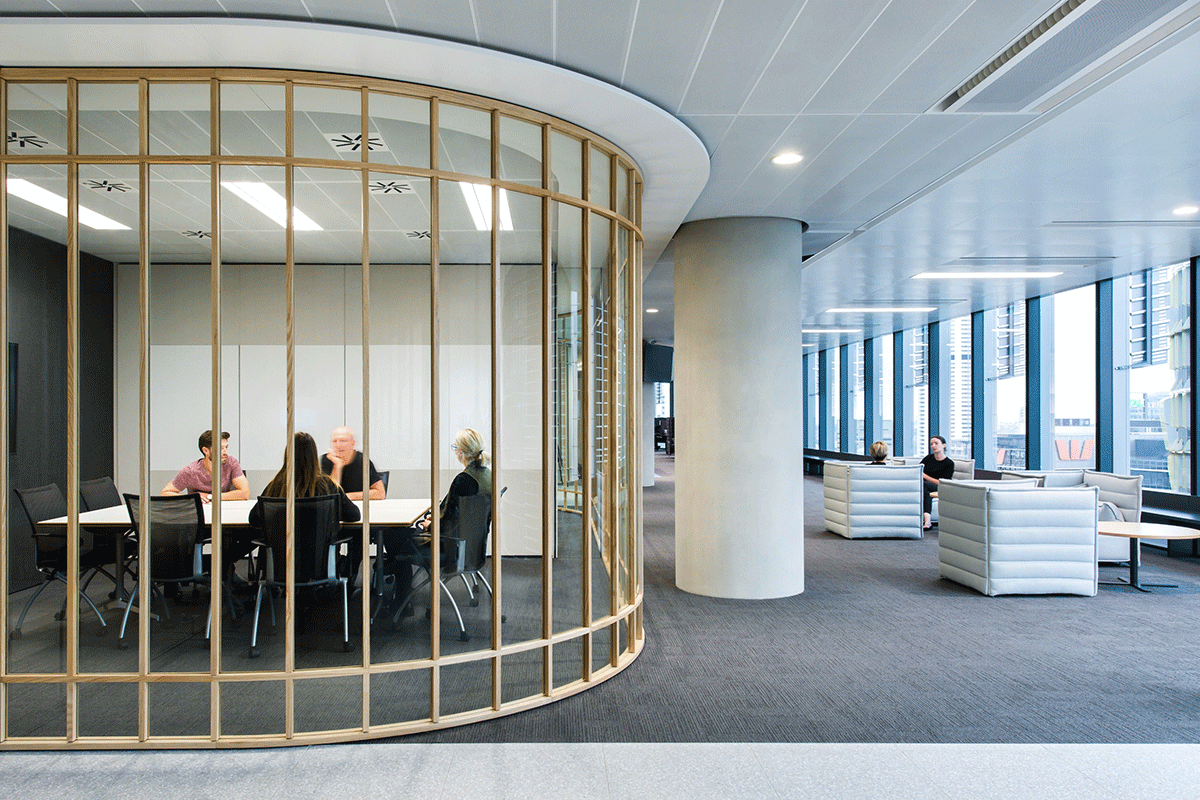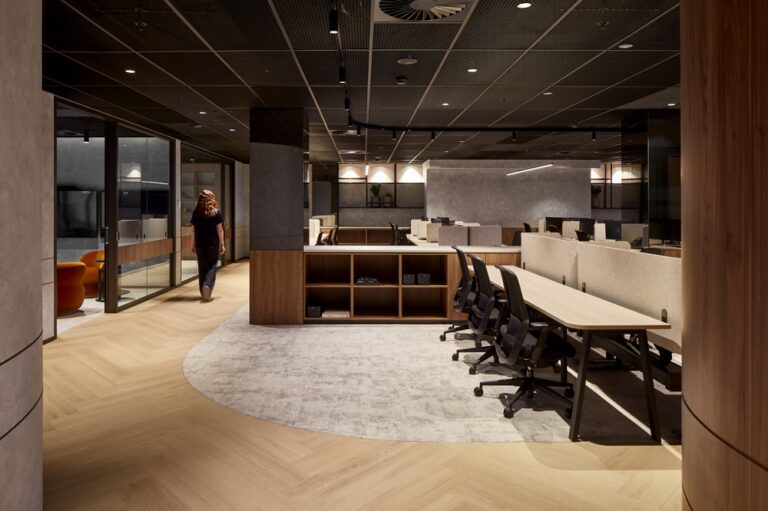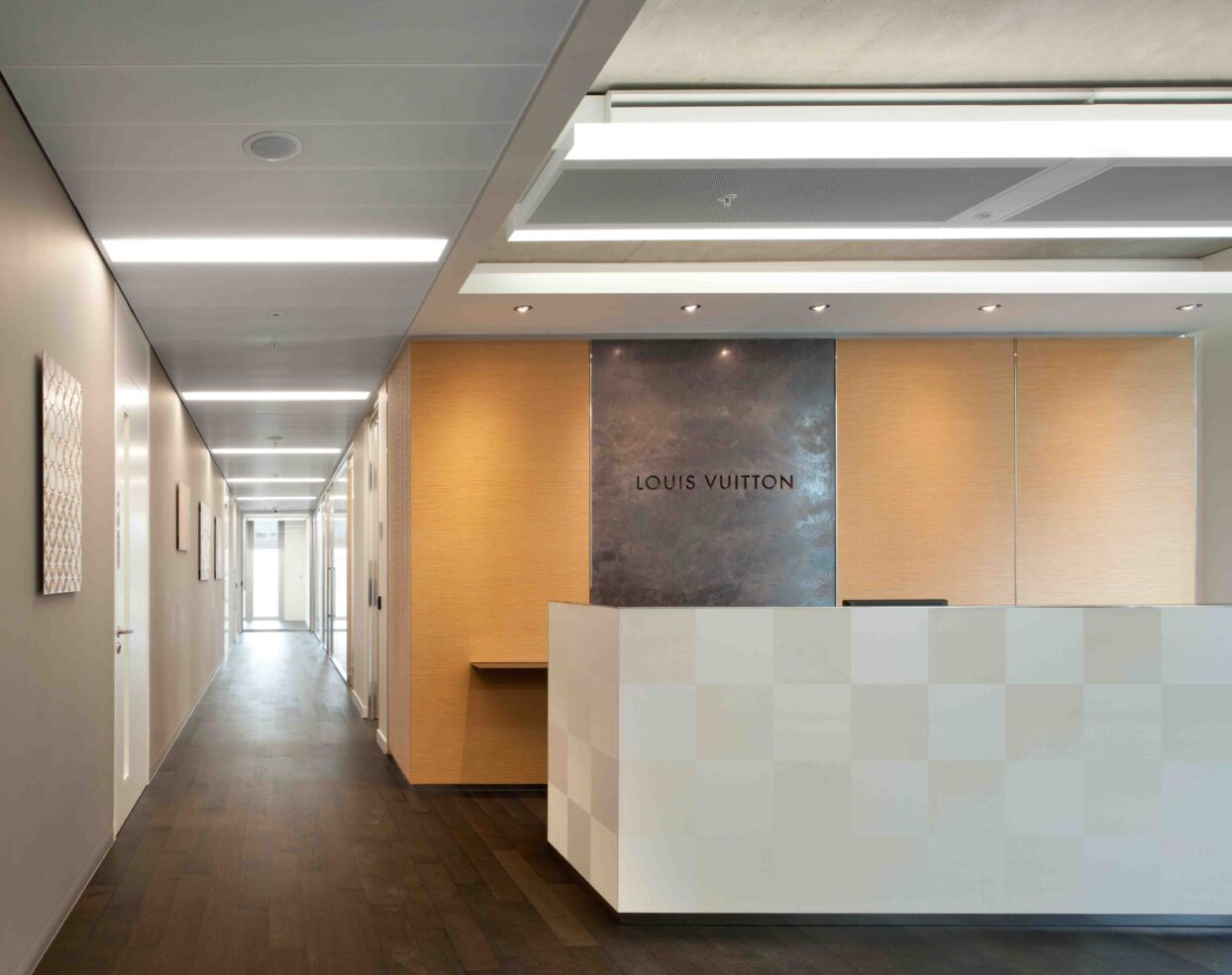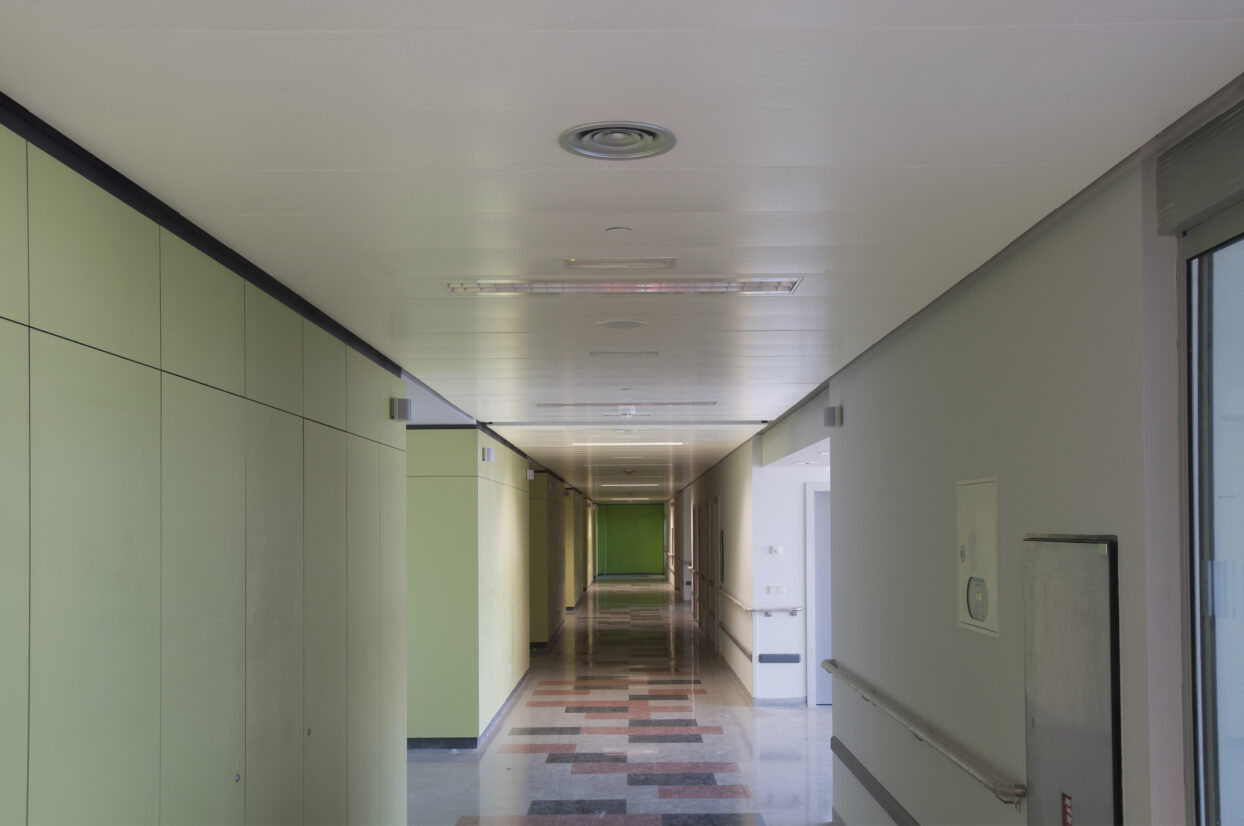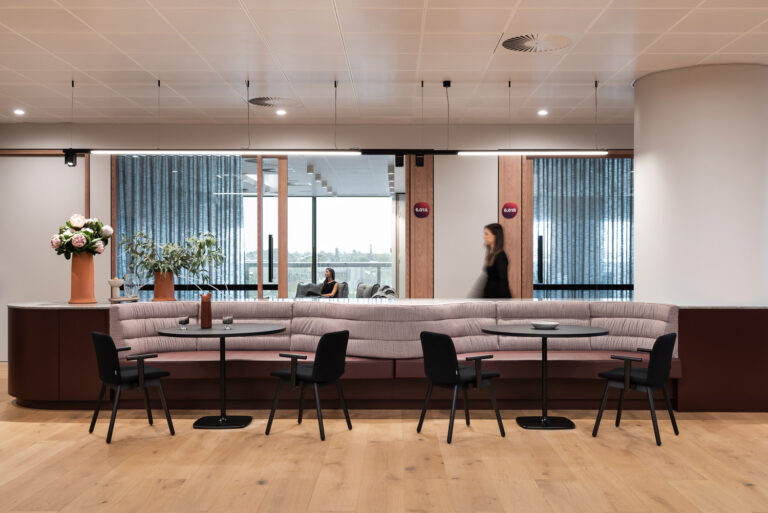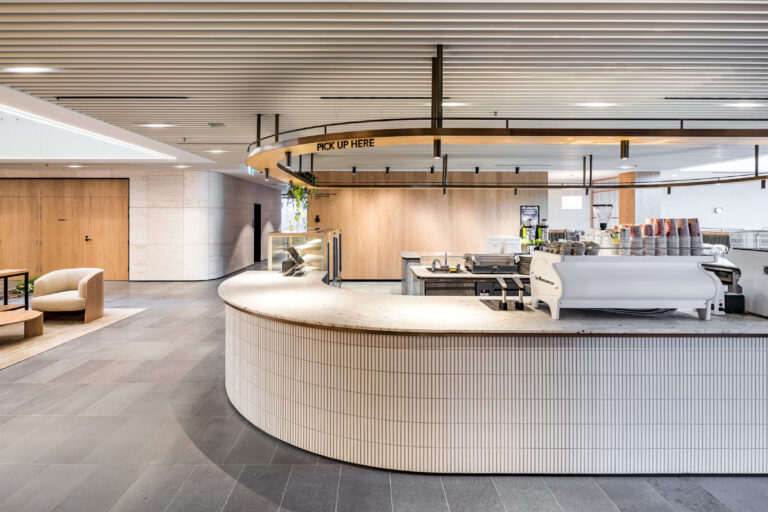Key Insights
In commercial design, acoustic performance plays a major role in how people experience a space. Whether it’s a classroom, office, or airport terminal, controlling sound can improve comfort, concentration, and communication.
Understanding Acoustic Ceilings in Modern Architecture
Ceiling Acoustics Explained: Choosing the Right System. Acoustic ceilings are one of the most effective ways to manage noise while maintaining design integrity. At Progressive Materials, architects and designers can choose from a wide range of metal ceiling systems that balance form, function, and acoustic performance.
What Is an Acoustic Ceiling and How Does It Work?
An acoustic ceiling is designed to absorb, reflect, or diffuse sound waves to control how noise travels through a space. Unlike traditional plasterboard or solid surfaces, these systems often include perforations or acoustic insulation that soften sound and reduce reverberation.
In metal ceiling systems, this is achieved by combining perforated panels with sound-absorbing materials such as mineral wool pads. The result is a high-performing ceiling that also looks sleek and modern?
What Are the Main Types of Acoustic Ceilings?
Different ceiling systems provide unique acoustic and design advantages. Progressive Materials offers a variety of solutions that cater to the needs of architects, builders, and commercial clients.
Metal Pan Ceilings
Metal pan ceilings are a popular choice for offices, boardrooms, and public buildings. Their concealed grid system offers a clean, seamless finish while delivering excellent acoustic absorption when combined with backing pads. These ceilings also provide easy access to building services above.
Linear Ceilings
Linear ceilings use long metal panels that create directional lines across the ceiling. They add sophistication and depth while managing sound effectively in corridors, lobbies, and transport hubs.
Expanded Mesh Ceilings
Expanded mesh ceilings bring a balance of acoustic performance and design flair. The open structure helps diffuse sound while allowing air and light to pass through, making them ideal for retail, hospitality, and creative workplaces.
Open Cell Ceilings
Open cell ceilings create a grid-like pattern that reduces echo while maintaining a sense of height and openness. They are especially effective in large commercial areas or spaces where visual depth is important.
Acoustic Rafts
Acoustic rafts are suspended panels that target specific noise zones. They are perfect for offices, schools, and hospitality venues where sound control is needed without covering the entire ceiling. Rafts also add a modern, architectural feature to the space.
What Are the Benefits of Acoustic Ceilings in Commercial Spaces?
A well-designed acoustic ceiling can transform how a space feels and functions. Some key benefits include:
- Improved comfort – reduces background noise and echoes.
- Better communication – clearer speech in meeting rooms and classrooms.
- Aesthetic flexibility – a variety of materials, finishes, and patterns available.
- Energy efficiency – reflective surfaces can help distribute light evenly.
- Hygiene and maintenance – metal systems are durable and easy to clean.
These features make acoustic ceilings an essential element of modern architectural design.
Which Acoustic Ceiling System Is Right for My Project?
Each project has unique acoustic and visual needs. Here’s how to choose the best fit:
Offices and Corporate Spaces
Metal pan ceilings or acoustic rafts are excellent for reducing echo and improving clarity in open-plan work areas or meeting rooms.
Education and Learning Environments
Linear or open cell ceilings offer durability and help create calm, focused spaces for students and teachers.
Retail and Hospitality
Expanded mesh ceilings add a stylish, industrial aesthetic while helping manage sound in busy environments.
Transport and Infrastructure
Metal pan and mesh systems are both robust and easy to maintain, perfect for terminals and stations.
Healthcare Facilities
Smooth metal surfaces are easy to clean, and acoustic rafts can improve comfort in waiting areas or corridors. By understanding each system’s strengths, specifiers can balance performance, budget, and visual design to achieve the ideal result.
Are Metal Ceilings Good for Acoustics?
Yes. While metal on its own reflects sound, modern systems are designed with perforations and acoustic backing materials that significantly improve absorption.
Unlike traditional mineral fibre tiles, metal ceilings maintain their appearance and performance for decades. They also allow access to building services, making them a practical and cost-effective long-term choice.
Frequently Asked Questions
What is an acoustic ceiling?
An acoustic ceiling is designed to control sound within a space by absorbing or diffusing noise. It improves comfort and speech clarity in commercial environments like offices, schools, and retail areas.
What type of ceiling is best for sound absorption?
Perforated metal ceilings with acoustic backing pads are among the most effective. Acoustic rafts also provide strong performance in spaces where full ceilings aren’t suitable.
How effective are metal ceilings for acoustics?
Metal ceilings perform exceptionally well when paired with acoustic insulation. They deliver consistent results over time and are resistant to moisture, sagging, and damage.
Are acoustic ceilings expensive to install?
The cost varies depending on design and materials. However, metal systems often provide better long-term value due to their durability, easy maintenance, and longevity.
What are the different types of commercial acoustic ceilings?
The main options include metal pan, linear, expanded mesh, open cell, and acoustic raft systems. Each has different visual and acoustic advantages for specific environments.
Can acoustic ceilings be used in open-plan spaces?
Yes. Acoustic ceilings help manage reverberation and improve comfort in large open areas such as offices, lobbies, and retail centres.
What’s the difference between acoustic tiles and acoustic rafts?
Tiles form a continuous ceiling surface, while rafts are suspended panels that absorb sound in targeted areas. Rafts are ideal for modern, open designs where full coverage isn’t required.
Are acoustic ceilings sustainable?
Yes. Metal ceilings are recyclable and often manufactured with low embodied carbon. Their longevity reduces replacement needs, contributing to sustainable building outcomes.
Why choose Progressive Materials for your acoustic ceiling project?
Progressive Materials offers a complete range of acoustic ceiling systems, including metal pan ceilings, linear ceilings, expanded mesh ceilings, open cell ceilings, and acoustic rafts. Their expertise and technical support help ensure every project delivers on both design and performance.
Conclusion: Balancing Design and Performance
Ceiling acoustics are about more than just managing noise – they define the atmosphere and usability of a space. Whether it’s a workplace, learning environment, or retail destination, choosing the right acoustic system can improve wellbeing and enhance design impact.
With Progressive Materials, you’ll find ceiling solutions that look exceptional, perform flawlessly, and support the long-term acoustic comfort of any commercial project.


